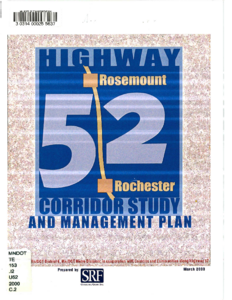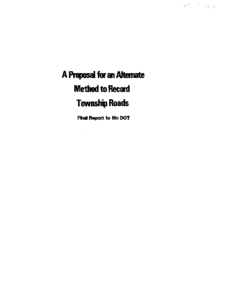Displaying results 1 - 9 of 9
Highway Jurisdiction Study
Date Created
1987-06
Description
A Proposal for an Alternate Method to Record Township Roads
Date Created
1986-06
Description









